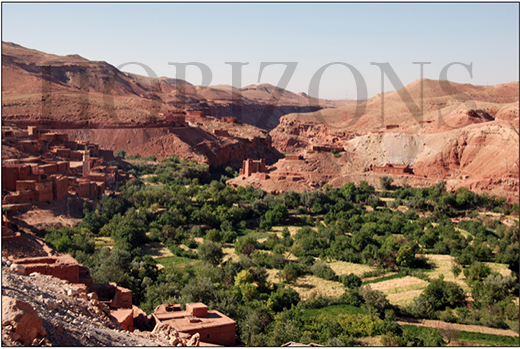
During the Milan EXPO 2015 the Pavillon ZERO hosted some important examples of historical rural landscapes of the world. Morocco offers some extraordinary examples of landscapes characterized by centenarian agricultural practices that local populations are still carrying on. These practices, besides ensuring the population’s livelihood, have allowed the farming of very arid areas, transforming the desert into a true garden. Traditional agriculture is still widespread. While some areas today employ high-yield modern technologies, there are still many rural landscapes combining distinctive environmental characteristics with historical features and traditional agricultural activities; fascinating places where farmers practice a low-energy-input sustainable agriculture, carefully managing their crops and water, and graced by settlements of high architectural-historical value. Going out from Marrakech towards the Upper Atlas and then down the eastern versant on the spectacular Tizin’Tichka road, one encounters a green and fertile cultivated valley that stands out against, and contrasts with, the bare and arid slopes of the surrounding mountains. The area is a complex puzzles of tiny plots of land irrigated using very scarce water resources. Telouet is not an isolated case. The environmental adaptation strategies of traditional cultures have resulted in similar landscape characteristics, almost independent of environmental conditions in many different parts of the world. The limitations imposed by water scarcity and hot climate have not prevented the possibility of developing a green and complex landscape mosaic in these areas. Humans can adapt to climate change and the protection of these landscapes around the world carried out by FAO GIAHS and UNESCO are crucial to preserve these examples of traditional knowledge. The complex structure of the landscape mosaic is also an exemplary illustration of biocultural diversity according to the UNESCO-CBD Florence Declaration of 2014. The concept of biocultural diversity recognizes that biodiversity results from the integration of both human and natural processes in time and space. Species and their habitats have adapted to landscapes, changing their features, therefore a biocultural approach is probably best suited to understand and manage most of the biodiversity today existing at landscape level.




